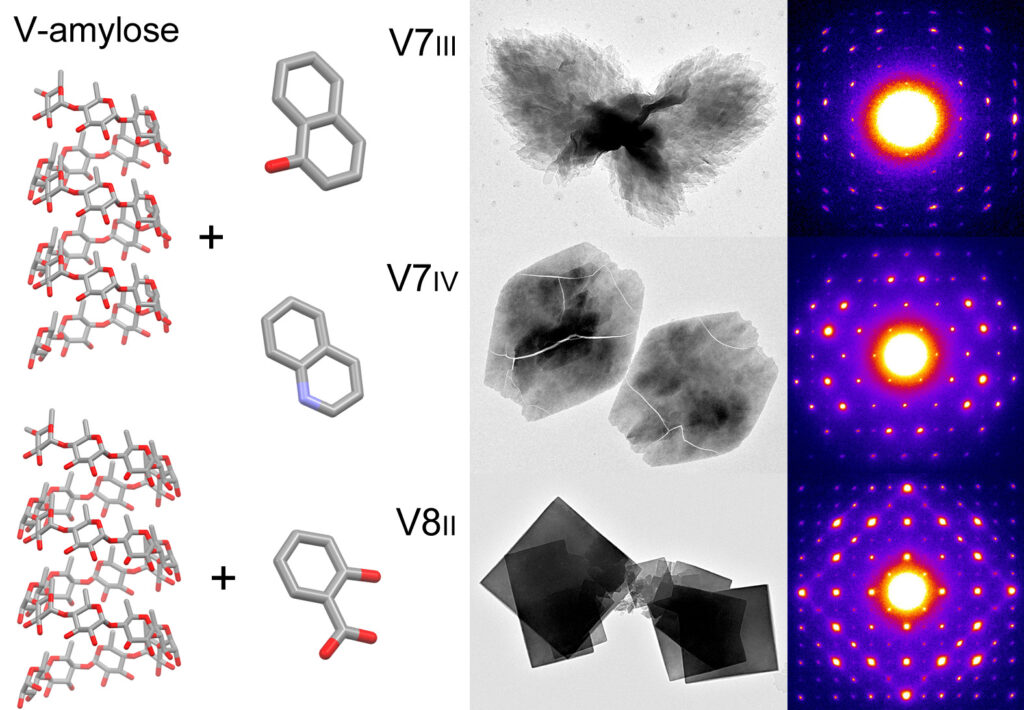These results were obtained during the thesis work of Cong Anh Khanh Le in the “Structure and Properties of Glycomaterials” team, in collaboration with the Toulouse Biotechnology Institute, the “Nova” team of Départment de Pharmacologie Moléculaire and Laboratoire Interdisciplinaire de Physique in Grenoble. Amylose, a mostly linear homopolymer of glucosyl units extracted from native starch granules, forms a large variety of so-called V-type host-guest complexes when cocrystallized with small hydrophobic molecules. Several allomorphs are known that contain 6-, 7- or 8-fold amylose single helices, the guest molecules being located in the helices, in-between, or both. This article describes the crystal structure of model lamellar inclusion complexes prepared by crystallizing amylose from dilute aqueous solutions in the presence of napth-1-ol, salicylic acid, and quinoline. By adequately selecting the crystallization conditions (amylose chain length, mixing and crystallization temperatures), each guest induced two allomorphs, characterized by transmission electron microscopy, X-ray and electron diffraction, and solid-state NMR spectroscopy data.
Abstract:
“Amylose, a mostly linear homopolymer of glucosyl units extracted from native starch granules, can form a large variety of so-called V-type host–guest complexes when cocrystallized with small hydrophobic molecules. Several allomorphs are known that contain six-, seven-, or eight-fold amylose single helices, the guest molecules being located in the helices, in-between, or both. The present report describes the crystal structure of model lamellar inclusion complexes prepared by crystallizing amylose from dilute aqueous solutions in the presence of three aromatic compounds, namely, napth-1-ol, salicylic acid, and quinoline. By adequately selecting the crystallization conditions (amylose chain length, mixing, and crystallization temperatures), each guest induced two allomorphs, characterized by transmission electron microscopy, X-ray and electron diffraction, and 13C CP/MAS solid-state NMR spectroscopy data. The three guests induced the formation of the tetragonal V8II allomorph, based on eightfold amylose single helices, whereas three other allomorphs were identified for the first time: V7III (with napht-1-ol) and V7IV (with quinoline), both based on orthorhombic unit cells containing sevenfold helices, and the monoclinic V8III (with salicylic acid). The results widen the family of known V-amylose allomorphs that may occur when starch is processed in the presence of various ingredients and additives.”
The article is available on the Editor’s website over here
and in HAL (open access) over here.



